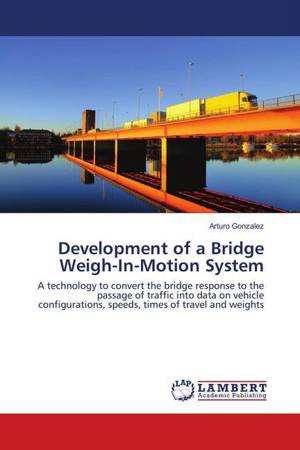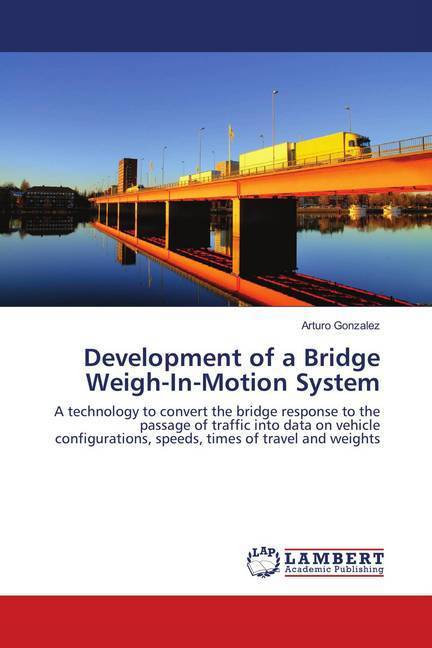
- Afhalen na 1 uur in een winkel met voorraad
- Gratis thuislevering in België vanaf € 30
- Ruim aanbod met 7 miljoen producten
- Afhalen na 1 uur in een winkel met voorraad
- Gratis thuislevering in België vanaf € 30
- Ruim aanbod met 7 miljoen producten
Zoeken
Development of a Bridge Weigh-In-Motion System
A technology to convert the bridge response to the passage of traffic into data on vehicle configurations, speeds, times of travel and weights
Arturo Gonzalez
Paperback | Engels
€ 77,95
+ 155 punten
Omschrijving
Weigh-in-Motion (WIM) data can be used to predict future traffic volumes and weights for the planning of new infrastructure, the management of maintenance activities, the identification/reduction of overloading problems and the evaluation of the performance of pavements and bridges. Most WIM systems are based on sensors placed in or on the pavement that measure the wheel force applied over them during a very short time. The value of this force varies as a result of road roughness and vehicle dynamics leading to limited accuracy for estimating static weights. Additionally, these systems experience durability problems due to traffic and environmental conditions. An alternative approach to WIM that addresses these limitations is the use of an instrumented bridge to weigh vehicles (B-WIM). This approach is the subject of research in this book. Inaccuracies derived from discrepancies between theoretical B-WIM algorithms and bridge measurements are investigated both theoretically and experimentally. The text also describes the development of a B-WIM system in Ireland, including all aspects of installation, calibration, data collection and its processing into useful traffic information.
Specificaties
Betrokkenen
- Auteur(s):
- Uitgeverij:
Inhoud
- Aantal bladzijden:
- 456
- Taal:
- Engels
Eigenschappen
- Productcode (EAN):
- 9783838304168
- Verschijningsdatum:
- 7/05/2010
- Uitvoering:
- Paperback
- Afmetingen:
- 152 mm x 220 mm
- Gewicht:
- 662 g

Alleen bij Standaard Boekhandel
+ 155 punten op je klantenkaart van Standaard Boekhandel
Beoordelingen
We publiceren alleen reviews die voldoen aan de voorwaarden voor reviews. Bekijk onze voorwaarden voor reviews.











